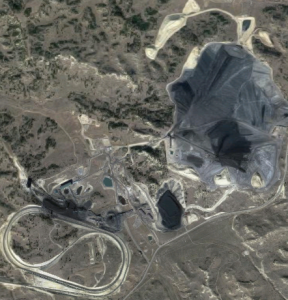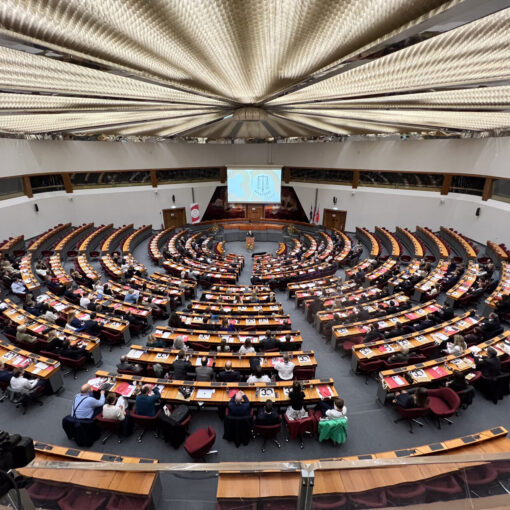
By Jessica Wentz
This week, federal courts issued decisions on two cases involving questions pertaining to the scope of environmental review for fossil fuel production and transportation projects. Among other things, these cases examined the extent to which agencies had complied with obligations under the National Environmental Policy Act (NEPA) to examine the indirect and cumulative greenhouse gas emissions generated as a result of the proposed projects (and their impacts on fossil fuel development and consumption). This is a subject that Michael Burger and I have explored in our previous work.
The first of the two cases, Montana Environmental Information Center v. U.S. Office of Surface Mining, No. CV-106-M-DWN (D. Montana, Aug. 14, 2017), involved the U.S. Office of Surface Mining (OSM)’s environmental assessment (EA) for the proposed modification of a federal mining plan in the Bull Mountains of Montana. The proposed modification would expand the leased area by approximately 2,680 acres and allow the company operating the mine to access an estimated 61.4 million tons of additional coal reserves. In the EA, OSM estimated that the combined annual CO2e emissions resulting from mine operations, coal transport, and combustion would be 23.16 million metric tons and would continue for an additional nine years beyond that which would be anticipated under the no action alternative. Despite the large increase in coal production and corresponding greenhouse gas emissions, OSM concluded that the proposed modification would not have significant environmental effects and thus a full environmental impact statement (EIS) was not required.
A group of advocacy organizations challenged the adequacy of the EA and OSM’s finding of no significant impact (FONSI), citing various deficiencies in the agency’s analysis. One of these deficiencies was OSM’s failure to use the social cost of carbon (SCC) protocol to calculate the cost of greenhouse gas emissions that would be generated as a result of the proposal, despite the agency’s having calculated the economic benefits of the project. Plaintiffs noted that, based on the projected emissions rate of 23.16 million metric tons per year, the cost of the emissions would be between $277 million to $2.5 billion annually.
OSM argued that it need not monetize the impacts of the greenhouse gas emissions because a cost-benefit analysis is not a required component of NEPA reviews. The court disagreed, holding that because OSM had projected the economic benefits of the proposal, it was therefore required to project the economic costs in order to provide a fair and balanced assessment of the proposal. The court cited High County Conservation Advocates v. USFS, 54 F. Supp.3d 1174 (D. Colo. 2014) and Center for Biological Diversity v. NHTSA, 538 F.3d 1172 (9th Cir. 2008) as cases supporting this proposition. This aspect of the court’s decision is consistent with recommendations in our paper on reviewing upstream and downstream greenhouse gas emissions.
The court also held that the FONSI was arbitrary and capricious, both due to the inadequacy of the analysis in the EA, as well as OSM’s failure to fully account for the factors that must be considered in a significance determination pursuant to federal regulations. In particular, the court found that OSM had failed to fully consider the level of uncertainty and controversy associated with the greenhouse gas emissions impacts, both of which are factors which weigh in favor of a significance determination.
The second case, Sierra Club v. U.S. Department of Energy, No. 15-1489 (D.C. Cir., Aug. 15, 2017), involved the Department of Energy (DOE)’s review of an LNG export application for the Freeport LNG Terminal in Texas. At issue was whether DOE adequately accounted for the indirect and cumulative effects of LNG experts, including the greenhouse gas emissions associated with the potential increase in production and consumption of U.S. natural gas.
For this review, DOE adopted an EIS prepared by the Federal Energy Regulatory Commission (FERC) that did not analyze these effects. However, DOE did incorporate into its review independent studies from the Energy Information Administration (EIA) on how LNG exports affect energy markets and also commissioned a report from the National Energy Technology Laboratory (NETL) on the lifecycle greenhouse gas emissions of LNG exports. The NETL report assessed the lifecycle emissions (production, transportation, consumption) of exported natural gas and compared these with emissions from electricity generated from coal or other sources of gas, but did not consider alternative energy sources such as renewables. Notably, neither the EIA reports nor the NETL report considered the specific effects of the export authorization under review on greenhouse gas emissions – rather, the analysis was generalized and applicable to all LNG exports (e.g., lifecycle greenhouse gas emissions from LNG exports were estimated per MWh of end use generation, but there was no estimate of lifecycle emissions for the volume of the exports under review). DOE did not use this information to calculate total greenhouse gas emissions associated with the exports authorized for the Freeport LNG Terminal). During the case, DOE argued that it compiled with NEPA by adopting the FERC EIS and that the supplemental environmental reports noted above were part of its effort to go “above and beyond what NEPA requires.” The court ignored this argument and treated the supplemental documents as part of the overall NEPA review.
One of the Sierra Club’s primary challenges to DOE’s review was that it did not tailor the indirect and cumulative impacts analysis, including the greenhouse gas emission estimates, to any particular volume of exports, specifically: exports that would be authorized at the Freeport terminal (which the Sierra Club argued should be evaluated as indirect effects of the proposal), and the total amount of exports from that terminal as well as other pending and anticipated LNG export facilities (which the Sierra Club argued should be evaluated as cumulative effects). The Sierra Club noted that, based on the methodology used in the NETL report, the production, processing, and pipeline transportation of 100 bcf/y of gas – the amount the EIA determined would likely be induced by the 146 bcf/y of exports authorized in this action – would emit 1.76 million tons per year of CO2e (this estimate does not include combustion emissions). In addition, the Sierra Club argued that the greenhouse gas emissions analysis was inadequate because the study commissioned by DOE did not consider the possibility that U.S. LNG exports would compete with renewable energy sources which are already quite prevalent in some of the regions where the LNG exports would be consumed (Europe and Asia).
The court agreed that “DOE’s generalized impact assessment is not tailored to any specific level of exports” but nonetheless upheld the analysis. It did not articulate a reason why DOE should not be required to estimate the greenhouse gas emissions for the specific exports under review. The court did, however, briefly respond to the Sierra Club’s argument that the NETL analysis was inadequate due to failure to consider the possibility that LNG exports would compete with renewables. With regards to that argument, the court concluded that it must defer to DOE’s determination that adding other variables to the analysis would be too difficult and the results of the analysis would be too speculative to help inform decision-making.
This is not the first time the D.C. Circuit has ruled on the scope of the greenhouse gas emissions impact review for LNG exports. As discussed in a previous blog entry, last year the court held that FERC was not required to evaluate the life-cycle greenhouse gas emissions in its review of LNG export terminals because it is DOE that has the ultimate authority to approve or disapprove the LNG exports. The problem now is that this decision, together with the FERC decisions, means that no agency is required to look at the cumulative effects of LNG terminal development on greenhouse gas emissions when making decisions about whether to approve additional terminals and exports. This is also a problem for other forms of fossil fuel infrastructure – now that the programmatic EIS for the federal coal leasing program has been terminated, there are no efforts underway to systematically evaluate the effect of federal fossil fuel infrastructure approvals on the climate or other environmental resources. It is extremely difficult for civil society to compel agencies to conduct programmatic reviews of this sort. (This is another issue we discuss in our paper on reviewing upstream and downstream emissions.) And while civil society can do the calculations on its own, as the Montana Environmental Information Center and the Sierra Club did in the cases above, there is no guarantee that this information will be considered by the action agency when making its significance determination, or its determination on what the best decision would be on a proposal.




